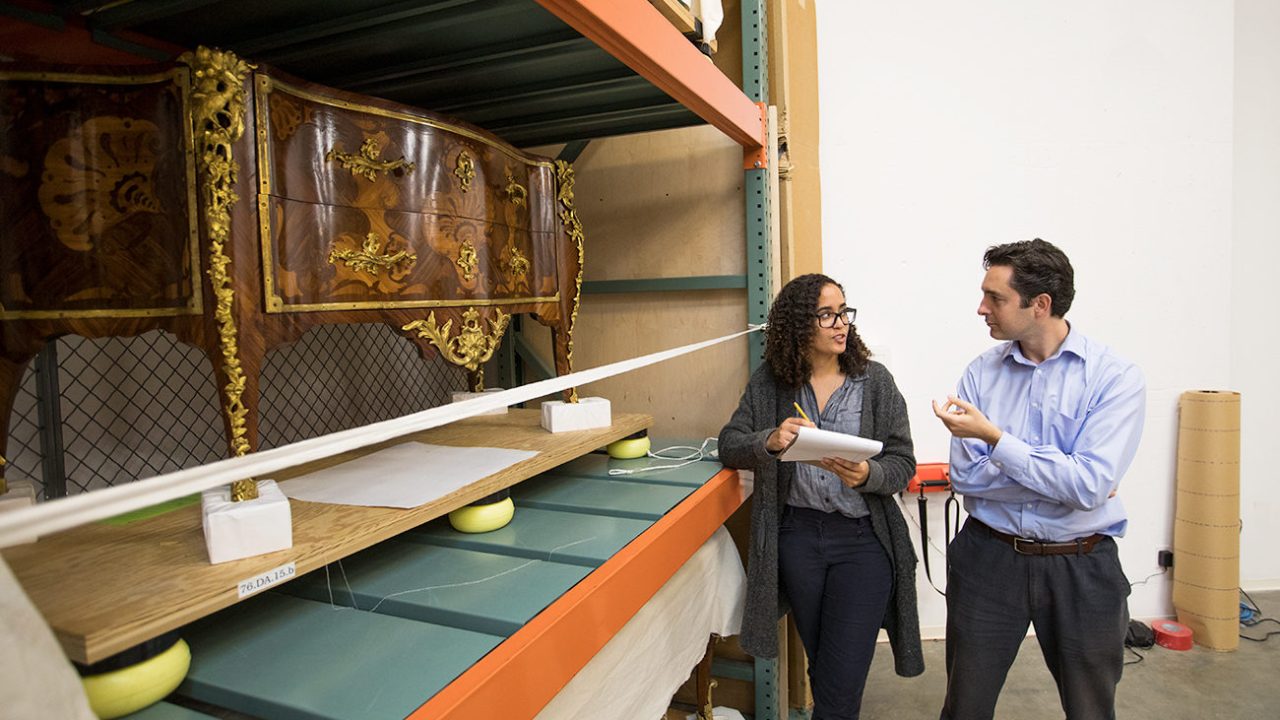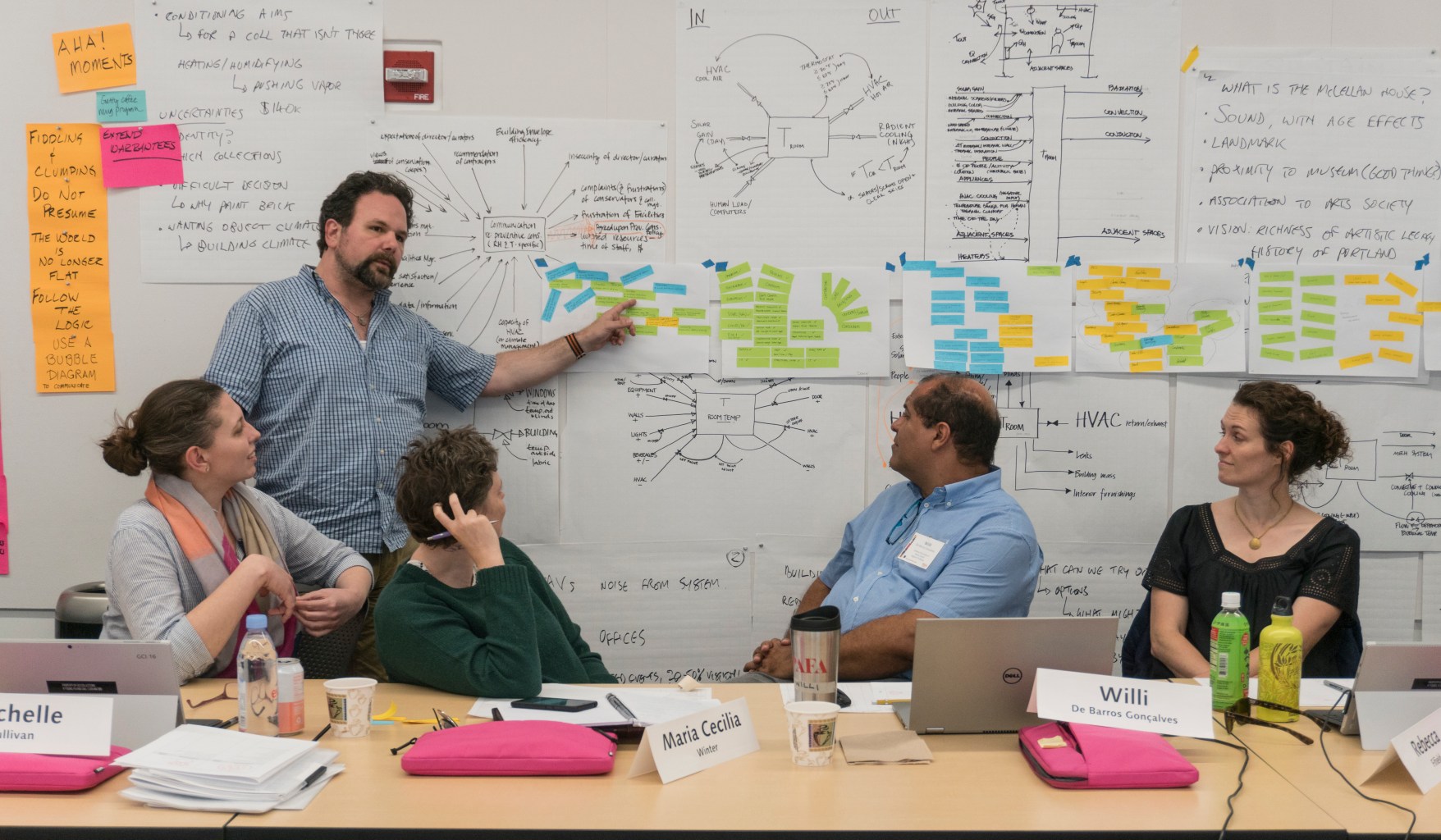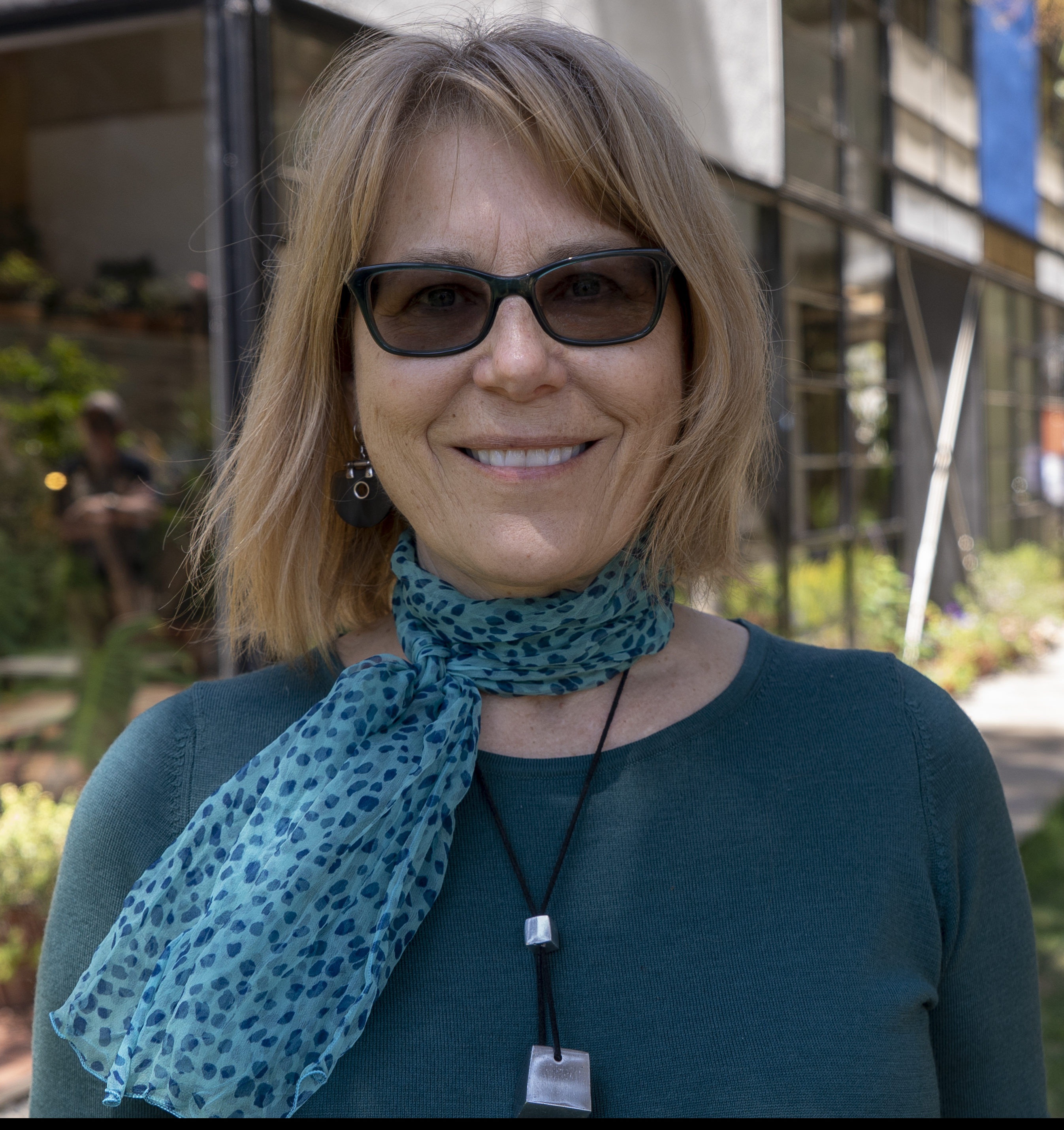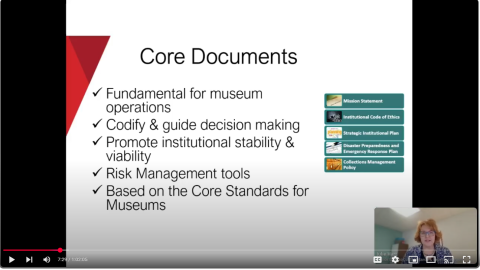
“Without deviation from the norm, progress is not possible.”
Too hot? Too cold? Too dry? Too humid? What is that perfect balance? Those responsible for the care of collections in museums and other institutions, such as libraries and archives, are keenly aware of the impact of the physical and ambient environments on a collection’s long-term preservation.
This is especially true with collections that include materials susceptible to moisture—wood, paper, and other hygroscopic materials. High relative humidity (RH) results in swelling that may cause mold growth; this is often seen in textiles and other organic materials, particularly during the summer. Extremely low RH, on the other hand, causes shrinkage and cracking in all wooden objects, but especially in marquetry and veneers on wooden objects when cold air is heated in the winter.
Developing Sustainable Approaches
Throughout the twentieth century, conservation professionals sought to establish what constitutes a safe collections environment—i.e., what conditions result in the least amount of damage over time. Scientific research, together with observations in the field, increased understanding of the agents of deterioration and their workings, but these studies were based on specific typologies of collections, museums, or climates.
By the second half of the twentieth century, many museums around the world followed what was considered the safe path to managing the climate in museums: they controlled indoor conditions to a fairly narrow temperature and RH band. As these parameters became universally implemented by collecting institutions, and as air-conditioning technology advanced, the parameters became more rigid, frequently resulting in a one-size-fits-all approach to environmental management that did not consider local climates, building and collection specifics, and available resources.
The international conservation community is now working to review and revise these long-held positions, but the effort has been complicated by the need for new guidelines to reduce contributions to global climate change, as well as by an uncertain future with regard to the availability and affordability of energy. There is a fervent debate about whether or not—and to what extent—environmental standards for collections should be modified, especially since broadening the acceptable range of climate fluctuations (temperature and RH) is seen as an effective way to reduce energy consumption.
Museum directors and other professionals, searching for pragmatic and sustainable strategies for creating safe collections environments, are now looking to the conservation field for guidance. So that conservators can provide viable solutions, in 2013 the Getty Conservation Institute (GCI) created Managing Collection Environments (MCE), a multiyear initiative that combines scientific research with fieldwork and education in an effort to address outstanding issues and questions relating to the management of collection environments.
“We saw a real need for more research on real objects in real conditions,” says GCI senior project specialist Joel Taylor, one of MCE’s project managers. “The scientific research we’re conducting combines laboratory research on a microscale with studies of climate-induced damage in the field. By measuring naturally aged, historic materials, we’ll have a better understanding of climate-induced damage mechanisms. These studies will help identify more precisely the conditions under which irreversible damage occurs as a result of climatic agents of deterioration. This, in turn, will inform long-term strategies for the preservation of collections.”
Existing policy and practice can also impede change, even when there is a better understanding of the risks of climate-induced change. This is particularly the case with international loan agreements that too often stipulate climate requirements for objects around a moderate RH set point, regardless of the climate in which an institution is located or the type of collection it preserves. It has been up to borrowing institutions to accommodate these requirements. While tight parameters in loans are sometimes necessary, always adhering to them prevents institutions from moving toward more sustainable approaches.
Reference points, such as standards and guidelines, also need updating to be more helpful in decision-making. For this reason, the MCE project team joined with other professional colleagues in efforts designed to influence environmental management policies. One such effort has been the revision of the chapter “HVAC Applications” in the hand-book for the American Society for Heating, Refrigerating and Air-Conditioning Engineers that deals with museums, galleries, archives, and libraries.
“This revision is intended to draw out more of the context and process affecting the choice of control mechanisms and parameters in the design and implementation of environmental management strategies,” says Taylor, who along with Jeremy Linden, a specialist in preservation environments, has authored a longer article on the revision for the August issue of Papyrus, a publication of the International Association of Museum Facilities Administrators. “Because cultural institutions vary in their collections and uses, their global and local environments, and their contexts, timeframes, budgets, and stakeholders, the new chapter integrates these factors into decisions about environmental parameters and control types.”
GCI senior scientist Michal Lukomski notes, “an especially significant revision is that the starting point for climate control specifications is no longer the historically perceived optimum of 50 percent RH and 70°F/21°C, but is instead the historical climate average to which a certain collection and building have been acclimatized—with broad limits to avoid universal problems like mold.”
This means that the selection of future interior climates can be more closely related to the specific environmental history of the collection, as well as something known to be achievable in the institution’s current context, thus increasing the chapter’s applicability to different climate zones. There is also more indication of the kind of building that might realistically achieve the levels of control described, which adds to the pragmatism that the chapter has always embodied. Equally significant is that loans and permanent collections will now be in separate categories with different climate specifications. This presents more flexibility for energy saving, by allocating spaces for different levels of control, and for climate to be determined by need rather than external loan agreements.
While MCE’s research will increase understanding of the behavior of materials—thereby contributing to knowledge of what may constitute a “safe” environment—it is also clear that science alone cannot entirely remove professional reservations regarding changes to a collection’s environment at its home institution or when loaned. The many variables in material, construction, and other factors mean that scientific experiments cannot cover every possible situation. More importantly, what constitutes “damage” is subjective and varies with context. Risk aversion is a real issue, often resulting in the “better safe than sorry” approach.
“Knowing is not enough; we must apply. Willing is not enough; we must do.”
Even when conservators are armed with new information—and can then modify generic standards and develop creative solutions that fit the needs of their collections and institutions—they still need to relay the information to curators, administrators, and other museum professionals, and develop sustainable solutions collaboratively.
“The ability to influence is a key conservation skill,” says Jane Henderson, who teaches conservation at Cardiff University and is secretary general of the International Institute for Conservation of Historic and Artistic Works. “If you can’t make the argument, then you can’t be an effective preventive conservator. We have to make communications and influence a priority, so that conservators throughout their careers can pitch their ideas appropriately.” Managing collection environments necessarily involves working with a range of colleagues both within and beyond the museum, and therefore demands interpersonal skills that will facilitate decision-making requiring the support of other museum professionals. Also essential is a broader understanding of the contexts in which conservation operates.
“We need to speak the language of facilities managers and directors, and at the same time understand the impact of their decisions on the collections we look after,” says Lukasz Bratasz, formerly head of Yale’s Sustainable Conservation Laboratory and now a professor at the Jerzy Haber Institute of Catalysis and Surface Chemistry at the Polish Academy of Sciences.
To enhance the communications skill sets of those responsible for collections care, MCE in 2017 launched “Preserving Collections in the Age of Sustainability,” an innovative, three-phase course that includes online learning, an intensive workshop, and distance mentoring, all of which takes place over nine months. “We designed this course for those who are confronted daily with climate issues, and who are involved with making decisions about collections care at their institutions while understanding the assumptions in their own practice,” says Taylor. “Preserving Collections gives these mid-career professionals the opportunity to step away from the daily issues of their work and develop the skills needed to listen, influence, and lead.”

Course participants are not limited to conservators, but also include curators and facilities managers—professionals who bring their perspectives and return to their institutions with the ability to apply new information, tools, and skills. By fostering an environment where people are willing to share their experiences, both good and bad, instructors can focus the workshop on real-life, rather than perfect but unattainable, situations.
The second iteration of Preserving Collections in the Age of Sustainability course began with online learning in July 2019, followed by an intensive workshop in Melbourne that concluded on October 11. A suite of materials especially commissioned for the course covers a variety of topics— building envelopes (the physical separators between conditioned and unconditioned environments) and their impact on climate, the context and use of historic buildings, standards and guidelines, data strategies and climate control, negotiation, leadership, and communication strategies. The materials were further refined during the October workshop, and are expected to be available for free online in late 2020.
About the author:
Anna Zagorski, an AAM member, joined the Getty Conservation Institute in 1996. Currently, she is a research specialist in the Institute’s Dissemination and Communications department.
Written with contributions by Joel Taylor, Senior Project Specialist at the GCI.
A version of this article originally appeared in Getty magazine.







I certainly and emphatically thank Anna Zagorsky for concisely setting forth the basic findings and recommendations of the Getty Conservation Institute from 2013. Needless to say (perhaps), conservators by that time had been developing information in that regard for years, including the eminent Richard Kerschner, then at the Shelburne Museum. In the museum’s dozens of very different buildings, he observed the various and varying indoor climates, their effects on collections, and the possibilities for reasonably determining collections care in every circumstance. As someone who entered the museum profession embracing the ironclad rules of constant, mid-range temperature and relative humidity, I moved on to an attitude that, “It Depends,” when handling, housing, or treating any object; sweeping generalizations do not apply. The quoted words of Frank Zappa do apply.